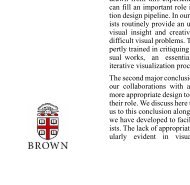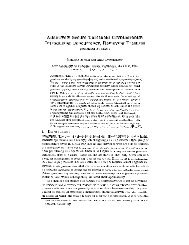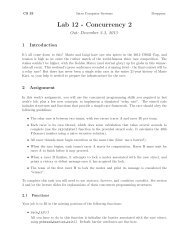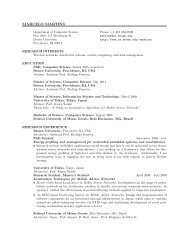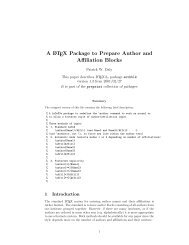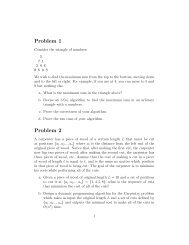Introduction to Color - Brown University
Introduction to Color - Brown University
Introduction to Color - Brown University
You also want an ePaper? Increase the reach of your titles
YUMPU automatically turns print PDFs into web optimized ePapers that Google loves.
CS123 | INTRODUCTION TO COMPUTER GRAPHICS<br />
Can characterize visual effect of any spectral distribution by triple (dominant wavelength, excitation<br />
purity, luminance):<br />
Dominant wavelength: hue we see; the spike of energy e2<br />
Excitation purity: “saturation,” ratio of monochromatic light of dominant wavelength <strong>to</strong> white light<br />
Luminance: relates <strong>to</strong> <strong>to</strong>tal energy, proportional <strong>to</strong> intensity distribution ∗ eye ′ s response curve<br />
luminous efficiency function , depends on both e1 and e2.<br />
<br />
<strong>Color</strong>imetry Terms<br />
Note:<br />
<br />
<br />
Energy<br />
Density<br />
e 2<br />
e 1<br />
400<br />
Wavelength,nm 700<br />
dominant wavelength of real distribution may not be one with largest amplitude!<br />
some colors (purple) have no dominant wavelength<br />
Dominant Wavelength<br />
Idealized<br />
uniform<br />
distribution<br />
except for e 2<br />
Andries van Dam<br />
<strong>Color</strong> 43/57



